[Thanks to the good folks over at New Male Studies for originally publishing this work. Apologies for not getting around to breaking this down into manageable chunks of easily read blog posts. You’ll simply have to put on your scholar cap and read it.]
Foundations for a Pro-Male Ethics
Jason Gregory
The ethics of care, or care ethics, aims to restore a concrete context to morality through the recognition that we are embodied selves. This paper analyzes care ethics and how they have been appropriated by prominent feminist philosophers and used to spread invective notions about men. There are many reasons why men should embrace care ethics and incorporate such ethics into a larger pro-male ethics. There are very good moral reason for men to find a balance between an embodied self and an abstract self. Care ethics, incorporated into a pro-male ethics, can help restore a more profound sense of personhood to men, but before this can happen, care ethics need disconnected from those who have misappropriated them for use as an ideological tool to spread misandry.
Keywords: care ethics, rationalist masculine ethics, pro-male ethics, feminist ethics, misandry, feminist-philosophers, alienation, equality, abstract self, embodied self, hierarchy, hypergamy, patriarchy.
The terror and tyranny of equality is something every man faces, where no man has a responsibility to care, only the agreement to not interfere. In this sort of rational ethic, every man confronts the egalitarian self—a disembedded and disembodied self—nameless, indistinguishable, faceless. There is no possibility of being face-to-face with each other for there are no others. Everybody is nobody—the same. Every man confronts the facelessness of equality, of being-as-nobody. Darkness covers us all under this egalitarian veil of ignorance.1 Such is the terror and tyranny of equality.
Simple egalitarian ethics are not sufficient for humanity because there simply isn’t enough humanity in them. The moral domain is too small. The self is decontextualized. The self is relatively meaningless as it becomes indistinguishable from others. The self, under the tyranny of egalitarianism, suffers a crisis of epistemic impoverishment. So, don’t call me an egalitarian. I’m not one and neither are you, for you are more than an indistinguishable and faceless self.
If you consider yourself pro-male, then it’s time to consider a more comprehensive ethics. It’s time to expand your moral domain to include more than the so-called masculine ethics of rationalist abstract principles of non-interference. It’s time to include, within your moral domain, concrete moral principles that restore context and meaning to the self and to others—giving us face-to-face experiences with each other, rather than faceless experiences of everybody-as-nobody. Without such concrete principles, there can be no restorative justice for men and boys and there will never be any genuine voice for men. Consider an ethics that restores to men and women the responsibility to actively care for and about each other.
In contrast to a care ethics, the so-called masculine ethics of rationalism that infests and manifests itself in various forms of egalitarianism are forms of violence against men that silences the male voice. They alienate men from experiencing an authentic self and from profound experiences with others.2 These so-called masculine ethics promote an atomized individualism that has a logical end of aloneness, cut off from the interrelatedness-of-being. They promote a callous indifference that mangles, strangles, and mutilates an emergent self. They are systems that distort the personhood of men. As such, men are not the primary beneficiaries of these systems. In fact, men are the primary sufferers of them.
It’s time for men to reclaim care ethics. Consider the principles embodied in a care ethics as an expansion of the moral domain that envelopes not only a notion of justice as fairness regarding principles of non-interference, but also includes principles of universal responsibility to care.
Care ethics have been misappropriated and used to spread the invective notion that men have been and continue to be a privileged class of oppressors. It is time to reclaim care ethics from those who would misappropriate them as a tool to spread hatred of men and boys.
A Brief History of Care Ethics
Though an Ethics of Care is sometimes called a feminine or feminist ethics, it has philosophical roots in Aristotelian virtue-ethics, Hume’s sentimentalism, American Pragmatism, and Levinasian ethics.3 So, it’s not entirely accurate to categorize an Ethics of Care as feminine or feminist ethics. In fact, it has been criticized for perpetuating the stereotype that women are naturally better caregivers and inherently better at nurturing/mothering. That critique tends to highlight the distinction between humanist-feminism and gynocentric-feminism as laid out by feminist-philosophers like Iris M. Young.4 It has also been criticized as a form of Nietzschian slave morality and there are plenty of other critiques on the topic, if one is inclined to further research it.5
Further research on care ethics leads inevitably to the feminist, psychologist, and professor at NYU—Carol Gilligan. She has been and continues to be a most prominent purveyor of care ethics.6 Her 1970s and 1980s research on gender differences and morality is often credited for sparking life back into an Ethics of Care.7 Much of her research was primarily a reactionary response to work done by Lawrence Kohlberg on the development of moral reasoning and judgment.8
Kohlberg postulated six sequential stages of moral development, the highest stage being primarily concerned with abstract notions of justice based on universal principles. See Rawls’ A Theory of Justice and Kantian ethics for a better understanding of these rationalist ways in which to derive ethical systems.9 Kohlberg’s initial conclusions showed (arguably) that women typically only develop their moral reasoning to about stage three of this three level, six stage psychological theory.
Gilligan simply could not accept this conclusion and set out to prove Kohlberg’s conclusion wrong. Gilligan essentially tried to demonstrate that Kohlberg’s tests were biased in favor of the so-called masculine ethics. Specifically, Kohlberg often used the Heinz dilemma as a tool to assess moral development.10 In response to this test, boys, more often than not, would reason the primacy of life over property to find a solution to the dilemma. Girls tended to be unsure and evasive in their answers to this dilemma and Kohlberg interpreted these responses as an indicator of their being morally underdeveloped.
Gilligan interpreted the girl’s responses as an indicator of their being as morally developed, if not more so than the boys. Gilligan saw that the Heinz dilemma decontextualized morality. The dilemma was not concrete enough and so it was seen, by Gilligan, as a form of violence itself because it removed from moral reasoning the particularities of a concrete context.
Gilligan wrote that “women’s judgments pointed toward an identification of the violence inherent in the dilemma itself which was seen to compromise the justice of any of its possible resolutions. This construction of the dilemma led the women to recast the moral judgment from a consideration of the good to a choice between evils.”11
Clearly, a dilemma is a choice between two equally bad options, but for Gilligan, the dilemma, severed from context, was a violence to the possibility of justice. Gilligan interpreted the seeming timidity and evasiveness of the girl’s responses reflected this level of awareness. As such, Gilligan concludes that their responses represented a much higher level of moral development than Kohlberg’s initial assessment.
This was Gilligan’s epiphany, as she calls it, giving her notoriety and an academic career that spans more than thirty years. During that time, there have been some who called into question her research methodology. A public dispute between Gilligan and Christina Hoff Sommers over the topic of the research data played out over a decade ago.12 Regardless of Gilligan’s research credibility and methodology, her idea has lent itself to philosophy.13
Any good introductory ethics or political philosophy course now contains at least a chapter or two on Ethics of Care.
The Misappropriation of Care Ethics as Misandry in Political Philosophy
The feminist political philosopher—Seyla Benhabib, uses care ethics in her work, The Generalized and the Concrete Other, to make a sharp critique of the so-called rationalist masculine ethics from Hobbes to Rawls.14 However, Benhabib’s paper is a prime example of how care ethics have been used to promote misandry and disguise it as academic philosophy. Though her critique of rationalist ethics is brilliant, the blatant, rampant, and profound misandry in her critique diminishes its overall quality, poisoning everything.15
She even violates one of the ethical principles that she promotes, failing to give voice and context to the particular men associated with her critique, lumping men, from Hobbes to Rawls, into the general category of The Patriarchy™, describing the male creators of these rationalist systems of ethics as nothing but men motivated by the unchecked narcissism of their male egos.
For example, Benhabib makes reference to a passage from Hobbes’ work, suggesting that we should consider men to be like mushrooms that suddenly spring forth from the earth, “without all kind of engagement to each other.”16 Benhabib goes from this passage to the conclusion that this vision of men is an “ultimate picture of autonomy… [that]…frees the male ego from the most natural and basic bond of dependence,” one’s bond to mother.17 As such, Benhabib suggests that Hobbes tried to replace one of the most intimate bonds of connection and interrelatedness, the bond of child to mother, with a bond of man to nature—relegating mother to the domain of nature and segregating her away from the narcissistic male ego and its desire for ultimate autonomy.
So, it is clear. Benhabib knows that this severing of connection is harmful to men. Man, disconnected from one of the most intimate bonds of interpersonal connection, contributes to the creation of a narcissist who “sees the world in his own image; who has no awareness of the limits of his own desires and passions; and who cannot see himself through the eyes of another.” She goes on to say that the “narcissism of this sovereign self is destroyed by the presence of the other.”18
Benhabib then channels Hegel, saying that the “story of the autonomous male ego is the saga of this initial sense of loss in confrontation with the other, and the gradual recovery from this original narcissistic wound through the sobering experience of war, fear, domination, anxiety, and death. The last installment in this drama is the social contract: the establishment of the law to govern all. Having been thrust out of their narcissistic universe into a world of insecurity by their sibling brothers, these individuals have to reestablish the authority of the father in the image of the law.”19
Again, it is clear. Benhabib sees the creation of this man as a creation of a man severed from one of the most intimate bonds of connection—the facticity of his connection to mother, but Benhabib completely fails to attribute this state of affairs to anything other than the narcissism of male ego and The Patriarchy™.
Benhabib fails to provide a satisfactory account of why this happens, falling back on the tired narrative of The Patriarchy™. It must be The Patriarchy™. It must be the devaluation of women, mothers and all things feminine or natural that produces (or at least coincides with) the narcissistic male ego. Benhabib doesn’t explore other options or theories. Instead, she simply resorts to scapegoating men in-general as an explanation for why these particular men contributed to the development of rationalist ethics.
Flipping the tables, one could as easily (and wrongheadedly misogynistic or not) say that these men developed their rational masculine ethics in response to experiences with the unchecked narcissistic female egos of their mothers and women who ruthlessly severed them from the metaphorical umbilical cord of the private sphere and home, throwing them into the world, alienated, alone, disconnected. One could as easily blame the mother’s narcissistic desire for “ultimate autonomy.” Perhaps the mother, when her narcissistic ego was forced into a confrontation with the other—her children, severed connections in order to preserve her narcissistic world of self-absorption and self-indulgence. Perhaps the development of these rationalist masculine ethics were nothing but a response by men to accommodate the narcissistic female ego?
Benhabib isn’t going to flip the table in this way. That would require giving some sort of contextual heritage to these men. No, for Benhabib to critique these men, she needs them stripped of such relevancies. She needs them to exist as nothing but narcissistic male ego. For her, not even The Patriarchy™ can exist without it. Which, in turn, props itself up with the patriarchal structures of law—the social contract, which “only forces them to become less destructive” because men in-general are nothing but the purely destructive mania of narcissistic male ego.20 And all these structures, in turn, according to Benhabib, prop up the narcissistic male ego in a circular fashion that removes the contextual relevance and influence of mothers and women.
In this way, Benhabib is guilty of doing exactly what she accuses these men of doing—stripping individuals of their concrete particularities, making the other generalizable, undifferentiated, indistinguishable, substitutable. In this way, Benhabib also is guilty of relegating women and mothers to the realm of feminine or natural.
When she removes the contextual relevance and influence of women, mothers, and sisters from her perfectly circular world of narcissistic male ego and The Patriarchy™, she diminishes the role and power of women—their influence on the creation of these particular men and of men in-general. She minimizes the ways in which the private and public spheres overlap. She minimizes the power that women and mothers have within the realm of closely binding kinship ties and familial interrelatedness.
As she accuses these men of trying to minimize these private spheres of influence, so Benhabib also tries to minimize them. She fails to articulate the power wielded by women and mothers in these private spheres, failing to acknowledge how the private and public spheres overlap and influence these men in-particular and men in-general. She fails to articulate and clarify how these private spheres of influence and connectedness are sustained by men operating in the public spheres of economics and politics.
In her zeal to condemn men in-general and these men in-particular, from Hobbes to Rawls, she fails to see that these private spheres of influence are propped up and enabled by the men who have enough economic status to afford them.
As such, Benhabib never bothers to question the price. She never bothers to ask about the cost to men. She never bothers to consider women as the primary beneficiaries of male economic sacrifice and care. She never bothers to consider the women who charge a price that costs men their context and particularities of self. The price charged to men for admission to the periphery of these private spheres is the cost of the disembedded and disembodied self, as Benhabib writes.21
In order for men to acquire the status and economic power needed to enable these private spheres of influence, men typically have to “sell their souls to the company store.”22 Men have to climb over other men and up corporate ladders, clawing, scratching, and biting at each other’s throats, competing with each other to make themselves distinct enough economically in a system that, from the start, strips them of their individuality—making every man the same, equal, indistinguishable, substitutable, disconnected, impartial, and alienated.
As such, status hierarchies, for men, represent the hope of achieving a more profound experience of personhood through access to those private spheres. Access is something bestowed upon men, if deemed worthy, by gatekeepers of the private sphere. Thus, gatekeepers have an immense power to determine whether or not a man has accumulated enough status to be worthy of experiencing a more profound sense of personhood through the interrelatedness-of-being, the kind of personhood only experienced via the private sphere.
His motivation, contrary to Benhabib’s misandric contention, is not the unchecked narcissism of male ego, but the search for access into the private sphere of connectedness and interrelatedness-of-being. It is a search for a self that he cannot find anywhere else, for everywhere else is permeated with the egalitarian undifferentiated self that exists only in relation to other undifferentiated selves—the faceless others. It is a search for a self that only exists within that private sphere and only in relation to those particular others who also exist within that private sphere.
From this perspective, it is possible to view the project of rationalist masculine ethics as an attempt, in part, to create a public sphere that allows for the acquisition of hierarchical status in an egalitarian system that is supposedly just and fair. It’s the seemingly impossible attempt to accommodate, within the public sphere, both equality and hierarchy.
Hierarchical status, within an egalitarian public sphere that is supposedly just and fair, are the means by which distinctions are made among those who are without distinction, those selves who are all the same—all for the hope of gaining access to those private spheres of context and care. As such, the rationalist masculine ethics can be viewed as an attempt to gain access to the care supposedly inherent in and excluded to the private sphere.
Contrary to Benhabib’s misandric contentions about the unchecked narcissism of male ego, the rationalist male ethics seem more like an attempt to placate and acquiesce to the narcissistic female ego of the private sphere which demands a tithe be paid in exchange for admission to her private realm—her sphere of influence and care. As a gatekeeper to her private realm, she requires the provision and protection of men operating in the public sphere to enable her private sphere. As such, the security and livelihood of her private sphere is directly linked to status hierarchies existing and constructed in conjunction with the rational masculine ethics existing in the public sphere.
The Misappropriation of Care Ethics as Misandry in Existentialist Philosophy
This brings us face-to-face with some important existentialist questions. Which came first—the private sphere or the public sphere? Does existence precede essence or does essence precede existence?
One prominent feminist-philosopher seems to know the answers. Virginia Held, says, “Without care-givers, no infants would ever grow up to be Hobbesian men or rational calculators.”23 However, without Hobbesian men to care for the care-givers, there would be no care-givers either. In her zeal to paint men in-general as The Patriarchy™, she fails to comprehend the simultaneous occurrence and interdependence of rational calculators and care-givers. Even with all her talk about the interrelatedness-of-being, she fails to articulate comprehension of the coincidental occurrence and interdependence of the two, preferring to cast a misandric shadow, privileging the importance of mothering in the private sphere over the importance of governing in the public sphere.
In Held’s paper, Feminism and Moral Theory, she puts into play the importance of mothering as more than a basic biological function.24 According to Held, the essence of mothering in the private sphere precedes existence of an essence in the public sphere.
In her own words:
“The most central and fundamental social relationship seems to be that between mother or mothering person and child. It is this relationship that creates and recreates society. It is the activity of mothering which transforms biological entities into human social beings. Mothers and mothering persons produce children and empower them with language and symbolic representations. Mothers and mothering persons thus produce and create human culture.”25
And in only a few lines down, her zeal to paint men as rational calculators of The Patriarchy™ manifests itself. She downplays and denigrates the importance of governing in the public sphere—likening it to base biological functions of ants, beavers, fish, and packs of predatory animals.
In her own words:
“In comparison, government can be thought to resemble the governing of ant colonies, industrial production to be similar to the building of beaver dams, a market exchange to be like the relation between a large fish that protects a small fish that grooms, and the conquest by force of arms that characterizes so much of human history to be like the aggression of packs of animals.”26
So, in her misappropriation of care ethics, she has reduced the public sphere accomplishments of men to that of base biological endeavors. Here she applies her misandry, spreading the invective notion that these accomplishments and sacrifices were made by men who happen to be nothing but worker drone insects, mindless fish, and aggressive predatory animals.
Before the immensity of this misandry soaks in, there’s more. In only a few paragraphs prior, Held wrote this:
“In the development of moral theory, men ought to have no privileged position to have their experience count for more. If anything, their privileged position in society should make their experience more suspect rather than more worthy of being counted.”27
So, Held tries to claim the primacy of private sphere mothering over public sphere governing, reducing the latter to nothing but the manifestations of men who are nothing but biological labor machines—insects, fish, and predatory animals. All the while, she maintains that men, as these biological labor machines, occupy a “privileged position in society” and should therefore have their lived-experiences be made more “suspect” and perhaps count for less in the tally of moral development theory.
Held also wants her cake and eat it too. She wants mothering to be given primacy status for its role and influence in the creation of human culture, but at the same time, she wants mothers to have little to no culpability when it comes to assessing anything that has ever gone wrong with human culture, preferring to blame those privileged men—those biological labor machines, insects, mindless fish, and predatory animals.
As with Benhabib in the previous section, Held fails to reckon the overlapping and coinciding influences between the private and public spheres. She fails to recognize the simultaneous occurrence and interplay of both spheres. Instead, Held tries to give the private sphere primacy and say that this sphere bestows essence and value upon the public sphere.
In fact, she holds the public sphere accomplishments of men and their lived-experiences as suspect and perhaps to be not as worthy as the experiences of care-givers in the private sphere. Held completely devalues the care given to care-givers by the men (the rational calculators of The Patriarchy™) who sacrifice their lives in the public sphere—for the benefit of care-givers who exist within the private sphere. Rather than viewing these sacrifices made by men in the public sphere as forms of care, she denigrates their sacrifice and labor, likening these men—their sacrifices and labors, to insect drones, mindless fish, and packs of predatory animals.
The Misappropriation of Care Ethics as Misandry in Democracy
In the previous two sections, we saw two prominent feminist-philosophers, Benhabib and Held, calling the accomplishments, sacrifices, labors, and caring of men in the public sphere the unchecked narcissism of male ego and the mindlessness of insect drones, fish, and predatory animals. All the while, these feminist-philosophers are promoting the care ethics inspired by Carol Gilligan…and she is flabbergasted at the idea that feminism might be seen as being anti-male.
“That sort of view that feminism is against men…it just doesn’t, but from the beginning, it never made sense to me. And so, I was asked recently by a group of young women, at a young women leadership conference-program at Harvard, ‘do I think of myself as a feminist?’ So, I said yes. Would you like to know how I define feminism? So, I said I thought feminism is one of the great liberation movements in human history. And it is the movement to free democracy from patriarchy… [and that]…is a hierarchy…that divides fathers, some men from other men, the men from the boys, like African American men were called boys, not real men. And it divides all men from women. And it places fathers over mothers and children. And, in fact, in making those separations, it divides everyone from parts of themselves. So, psychologically, patriarchy is always unstable… [and is]…contradictory to democracy, like slavery and imperialism.”28
So, Gilligan wants to free democracy from hierarchy. That is some clever rhetoric, conflating feminism with democracy and painting them both as a libertine struggle against hierarchy—The Patriarchy™. However, stripped of her clever rhetoric, Gilligan is basically repeating the same old tired story–feminism is an egalitarian movement. Feminism is about egalitarian principles. Never mind the fact that the impartiality of egalitarian principles are often contrary to the partiality of Gilligan’s care ethic principles. Also, never mind the fact that egalitarian principles are largely the product of rationalist masculine ethics.
Also notice that in contrast to Benhabib and Held, we can see in the video Gilligan’s ostensible resistance and hesitance about naming men as a privileged class of oppressors who have women under their boot-heel. This hesitation reflects the sentiment of feminist-philosopher, Iris M. Young, when she makes this statement in Humanism, Gynocentrism, and Feminist Politics:
“If we claim that masculinity distorts men more than it contributes to their self-development and capacities, again, the claim that women are the victims of injustice loses considerable force.”29
This sort of sentiment begs the question, as Young articulated it, “of what does male privilege consist?”30
Just because men tend to be stratified on various forms of status hierarchies, what ground do we have to say that this makes them privileged? If we view these status hierarchies as forms of oppression that divides fathers, brothers, men, and races, why do we tether the word privilege to males-in-general? If we are promoting a care ethic, why would we minimize the experiences of these men as suspect, like Held suggests, and accuse them of being privileged? If we are practicing a care ethic that seeks to liberate men from hierarchy, why are we not listening to their voices? Why are we minimizing their experiences as privileged?
If men overwhelmingly suffer the psychological trauma of being a disembedded and disembodied self, as Gilligan and feminist-philosophers like Benhabib would say, in order to occupy positions on these various forms of public sphere status hierarchies, privileged should not be a fitting descriptor of them.31 If the occupancy of these positions requires men to sell their souls, become alienated, alone, faceless, to be cut off from deep meaningful connections with others—if men have to become the disembedded and disembodied self, then it would be important to flip Young’s question and ask…of what does female privilege consist?
If practicing a care ethic while simultaneously articulating the psychological trauma and oppression of men, as described by Gilligan, it’s important to consider and question who may be the primary beneficiaries of this psychological trauma and oppression of men.
Do not the mothers and women operating in the private sphere of care and influence benefit from the psychological trauma and oppression of these men? Do not these mothers and women reap the economic benefits of male sacrifice? Is it not primarily the private sphere of women that is propped up economically and in parallel with these economic hierarchies? And is it not true that the primary beneficiaries of male economic sacrifice are the women and mothers who spend that wealth? Of what good is care in the private sphere of the home, if there is no home—one that was paid for and built by those men operating in the public sphere and suffering from the psychological trauma described by Gilligan?
Without a house in the first place, there is nothing to be made into a home of the private sphere in which the important care of mothering can take place.
If Held is correct regarding the importance of mothering and mothering persons, then the private sphere in which mothering takes place likely cannot stand without the sacrifices made by men in the public sphere. As such, it is women, mothers, and mothering persons, as Held writes, who rely on this psychological trauma done to men. It is the private sphere that relies on the oppression of men. It is women, operating in this private sphere, who prefer the soulless, alienated, disembedded, and disembodied self of men who have acquired a relatively high status on various sorts of public sphere hierarchies as psychologically traumatized objects-of-utility.
If Held is correct, then it is these so-called caring women who, through their high regard for the well-being of their private spheres, prefer men of relatively high status, rather than men of low status. As such, there is no good way to untether these women from their share of culpability in the creation of these male status hierarchies, for these status hierarchies are simply the flipside of their hypergamy.
If Gilligan wants to liberate democracy from hierarchy, she needs to recognize that democracy would also need a simultaneous liberation from hypergamy. The two coincide with each other. In fact, hypergamy is rather unintelligible without hierarchy and neither would the hierarchical status of men make much sense without women’s preference for relatively higher status men.
To believe that hierarchy precedes hypergamy, one would have to hold misandric beliefs such that men are nothing but the unchecked narcissism of their male egos working in combination with the mindlessness of their base biological functions as insect-like worker-drones—labor machines.
One would also need to minimize the choices and influence that women have in their mate selection processes and that means minimizing their reproductive choices. Before birth-control and abortion, one of the most powerful tools of reproductive choice was female mate selection. So, of course women would have a preference for higher status men and that preference is part of a reproductive choice and strategy.
As such, feminist-philosophers should not minimize the importance of female preference for and influence on the creation of these hierarchies via hypergamy. Gilligan and feminist-philosophers should not be averse to talking about the preferences of females in their mate selections, for these choices are forms of reproductive choice.
Specifically, they should discuss why the psychologically traumatized men—the Don Drapers of Mad Men, who occupy relatively high positions on status hierarchies have so much appeal to women.32 If the stereotypically male gender-role of provider and protector actually contributes to the psychological trauma of these men, as Gilligan suggests, then it’s important to address how the stereotypical female gender-role of mothering benefits from this oppression of men.
This dynamic—the psychological trauma suffered by men, the female preference for these men based on their status within hierarchy, and the stereotypical female gender-role of mothering—all rolls together as a power dynamic that is marked by its great disparity.
As Held writes in Feminism and Moral Theory:
“Furthermore, for one person to be in a position of caretaker means that that person has the power to withhold care, to leave the other without it. The person cared for is usually in a position of vulnerability.”33
There is a power dynamic here. It puts the caregiver in the position of power over the person who receives the care. The psychologically traumatized men are in a vulnerable situation. Their identity within the public sphere of business and economic production alienates them from an identity as anything other than a faceless sort of labor machine. As such, these men are vulnerable to the caregivers who bestow upon them their care, restoring to them a meaningful existence that is entirely connected to and built upon a relationship with their caregiver—a relationship with an enormous power disparity.
In this way, the caregiver has the power to manipulate his vulnerability, threatening to withhold care, and by extension, threatening his identity as a unique person. In this way, there is always the looming shadow within his relation to her, the threat that he will be severed from connection with her private sphere of care—relegated back to the egalitarian status of the public sphere as another faceless other, distinguished only by his economic accomplishments. And if the caregiver, through divorce courts, takes all of his economic accomplishments, then he is returned to the public sphere as completely indistinguishable, faceless, alone, the same—equally nobody.
This perspective presents a plausible explanation of the much higher suicide rate for men going through divorce or major split in relationship. Whereas she benefits from the power of being a caregiver who withholds care, he suffers further alienation and suicide may seem like a much better alternative to him.
In this way, it is possible to see the power-to-care as also the power-to-exploit. In this way, it is possible to view the psychologically traumatized man as one who experiences the trauma of disconnectedness all over again and through the experience of divorce. Here we recognize that the power-to-care becomes the power-to-destroy.
Going back to Young’s inverted question…of what does female privilege consist?
The answers seem clear. Their role as caregiver is their privilege. It is the power-to-care manifested as a power-to-exploit the psychologically traumatized man. As Held described, it is the power to withhold care and threaten these men with a repeated experience of the suffered trauma—the threat of again being severed from connection to the private sphere, the threat of again being thrown into an egalitarian nightmare of facelessness, aloneness, and isolation.
Female privilege, from this perspective, consists in their dominion over the private sphere and their exploitation of the psychologically traumatized men who are arbitrarily chosen to be included in or excluded from this private sphere based on their hierarchical status. As such, hierarchy and power-to-care are essential to female privilege.
Given that female privilege is tethered to hierarchy and the power disparity inherent in the power-to-care dynamic, it is not surprising to find a fascist face to feminism, as the genteel 3rd wave feminist, Naomi Wolf, describes in this fascinating article called Fascism with a Feminist Face.
Here is what she wrote:
“Western feminism has made some memorable theoretical mistakes; a major one is the frequent assumption that, if women held the decision-making power in society, they would be ‘kinder and gentler’ (a phrase devised for George H.W. Busch in 1988 to appeal to the female vote). Indeed, so-called ‘second-wave’ feminist theory abounds in assertions that war, racism, love of hierarchy, and general repressiveness belong to ‘patriarchy’; women’s leadership, by contrast, would naturally create a more inclusive, collaborative world.”34
Wolf goes on to speculate about the rise of extreme right-wing parties, their women leaders, and the appeal of fascistic hierarchical structures to women.
“And, for all of these women, as for any subordinate group anywhere, fascism appealed to what social scientists call “last-place aversion”: the desire to outrank other groups. Add, finally, the gendered appeal of the strong authority figure and rigid hierarchy, which attracts some women as much as some men, if in different psychodynamic ways. As Sylvia Plath, the daughter of a German father, put it in her poem “Daddy”: “Every woman adores a Fascist/The boot in the face, the brute/Brute heart of a brute like you.”35
Wolf references Plath’s line in conjunction with a reference to the different “psychodynamic ways” in which hierarchy may appeal to women. Clearly, Wolf is trying to paint the picture here of these women being victims of bootlicking fascistic hierarchies…because a brute is like daddy. The implication here is that these women find fascistic hierarchy appealing because daddy was a brute.
Disregarding Wolf’s implication, we can see another possibility. Perhaps the brute appeals to these women because the brute suffers from psychological trauma, as described by Gilligan. If this is the case, then the fascistic brute is in a vulnerable position to the caregiver. As such, the brute may appeal to these women because his psychological trauma places her in a position of power over him. Again, the disparity of the power dynamic is at play. Again, the power-to-care becomes the power-to-exploit.
There’s also the possibility that Wolf, as well as many other feminists who have a soft spot for women driven mad by The Patriarchy™, interpreted Plath’s poem all wrong.36 Perhaps “Daddy” was actually about Plath’s mother, a manipulative, abusive, and fascistic matriarch. If this latter interpretation is correct, then we could also apply it to understand possibly why psychologically traumatized men may be attracted to fascistic brutes like Plath’s mother.
If Plath’s mother was the real brute, and if this brute’s care is given out sparingly and only to particular men occupying relatively high status in hierarchy, then her care, however stingily doled out, becomes more valuable to him. Her particular care, bestowed upon him by a brute like Plath’s mother, is more meaningful to him. If care is given freely to all, then it is more akin to an egalitarian care of the public sphere. It lacks the particularity of a concrete context and is too impartial. The damage caused by the impartiality of the public sphere is something that the psychologically traumatized man is trying to escape. If he is searching for a particular care found in the private sphere, he may find it in the cold and stingy eyes of a brute like her. Again, this puts her in a position of power over him. Again, this is the power disparity arising from the power-to-care manifested as a power-to-exploit.
If one considers the above constituents of so-called female privilege, then the claim that “women are the victims of injustice loses considerable force,” as Young states. Instead, the word oppressor as a descriptor of women in-general becomes more fitting. Gilligan’s claim that the gender binary oppresses us all becomes suspect. It seems that hierarchy and gender binary produces a power dynamic that overwhelmingly empowers women with the power-to-care, the power-to-exploit, and the power-to-destroy.
Indeed, Gilligan’s claim that the hierarchy of gender binary hurts us all seems to act more like a cover that conceals us under a veil of ignorance, preventing us from seeing this lopsided power dynamic. Gilligan’s claim functions as a form of egalitarianism in its appeal to the rational male ethic, essentially promoting the idea that suffering is spread relatively equally through gender binary roles. It isn’t.
Even the claim that women may suffer from a lack of economic independence within the gender binary becomes suspect. If economic independence is tethered to the psychological trauma suffered in the public sphere, then again, we see that this lack of economic independence could be interpreted as beneficial to the stereotypical female gender-role because it allows her to escape the psychological trauma of the public sphere. She gains the possibility of remaining a special snowflake in her private sphere, something that would be contrary to her egalitarian status as a unit of labor production in the business world of the public sphere.
Though we may say that she is economically dependent, saying that she is necessarily oppressed by this dependence is a stretch. Would we say that a slave-master is oppressed by her exploitation of slaves because she is economically dependent upon them? No, but this is what Gilligan might have us believe when she promotes the idea that the gender-binary hierarchy hurts us all.
Gilligan fails to articulate this connection between hierarchy and the stereotypical gender role of women. She fails to describe the dynamics of this power disparity between men and women. She fails to mention how this power disparity empowers women. She does not talk about how the power-to-care has the potential to become a power-to-exploit and a power-to-destroy.
She fails to make clear how women in the private sphere are the primary beneficiaries of hierarchical structures of the public sphere. She fails, in her different voice, to clarify how the psychological trauma done to men in the public sphere primarily benefits women in the private sphere.
Instead, like Benhabib and Held, Gilligan falls back on her crutch—the tired narrative of The Patriarchy™. She blames The Patriarchy™ for the psychological trauma and fails to distribute a shared culpability to women in-general as an underlying factor in the creation of hierarchical structures that produce the psychological traumas. Rather than articulate the historical influence of women through their hypergamous reproductive choices and strategies, their power exercised within the private sphere, and their power-to-care as power-to-exploit, Gilligan simplistically names The Patriarchy™ for the psychological trauma.
In this way, psychological trauma, for Gilligan, props up The Patriarchy™ and, in turn, The Patriarchy™ props up the psychological trauma in a circular fashion. This circularity is much like Benhabib’s misandric contention—the narcissistic male ego props up The Patriarchy™ and that, in turn, props up the narcissistic male ego. Both explanations are too simplistic and fail to articulate a more profound understanding of gender and power dynamics that overlap and interplay between the private and public spheres.
If Gilligan wants to liberate democracy from The Patriarchy™ by creating a larger area of overlap between the private and public spheres and in conjunction with an expansion of care ethics, she will have to develop a richer understanding of gender and power dynamics. She will have to name the hypergamous reproductive strategies and choices of women as an underlying factor in the creation of status hierarchies that she wants to dismantle. Gilligan will also have to identify and articulate clearly ways in which to prevent a power-to-care from being abused as a power-to-exploit.
Lastly, Gilligan will have to distance herself from the blatant misandry of feminist-philosophers like Benhabib and Held. It’s not enough for Gilligan to simply express reluctance and hesitation about classifying men in-general as a class of oppressors. It’s not enough for her to appear flabbergasted at the idea that feminism might be anti-male—labeling the idea as nothing but a backlash.
If Gilligan is serious about liberating democracy from hierarchy, then she needs to actively disassociate herself and care ethics from misandrists like Benhabib and Held. Rather than giving lectures with and in support of them, Gilligan will have to denounce and name them for their misappropriation of care ethics as a tool to spread the invective and misandric notions that men in-general are a privileged class of oppressors, owing their privilege to the unchecked narcissism of male ego and base biological functions as mindless drone-like labor machines.
Conclusion
As the old phrase goes, “love won’t pay the bills.” Care is costly. So, in order for a woman to experience the interconnectedness-of-being and power-to-care that is derived from the private sphere, she must procure for herself a means of affording that sphere. Historically, she has needed a man, a husband, an alienated self to sacrifice for her—to pay for her private sphere, propping it up, affording her the privileged experiences of mothering and the interconnectedness-of-being got only from that private sphere.
All the while, he, as a psychologically traumatized object-of-utility, remains a sort of interloper on the periphery of her private sphere. There really isn’t much connection to be had with a person who isn’t really a person—a disembedded and disembodied self, a man alienated from the interconnectedness-of-being, faceless, individuated primarily by his status on some economic hierarchy in the public sphere. One that is supposedly egalitarian, just, and fair.
The feminist-philosopher, Annette Baier, describes these men in The Need for More than Justice:
“They may well be lonely, driven to suicide, apathetic about their work and about participation in political processes, find their lives meaningless and have no wish to leave offspring to face the same meaningless existence. Their rights and respect for rights, are quite compatible with very great misery, and misery whose causes are not just individual misfortunes and psychic sickness, but social and moral impoverishment…”37
As so well described by Baier, these men suffer the misery of alienation. However, in just a few lines down, she describes these men as a privileged class of oppressors who, through their development of and adherence to rationalist masculine ethics, exploit women and mothers. Baier goes on to juxtapose women and mothers with slaves and the private sphere with slavery.38
As another old phrase goes, “this is why we can’t have nice things.” This is why care ethics needs detangled from the misandry of those who have misappropriated it. Baier goes on to write about how the best ethics need to be a cooperative product between men and women and about how there is need for a harmony between justice and care, but completely fails to articulate how she would propose to make harmony out of the discord with a supposedly privileged oppressor class of men.
Surely, there needs to be an expanded moral domain that incorporates justice and care. If you approach the idea of ethics from a pro-male perspective, then there is little doubt about the need for a harmony between them. Indeed, there is need for men to embrace an ethics that restores context and totality to the personhood of men.
Clearly, the abstract notions of self, derived from rationalist masculine ethics, are not sufficient representations and descriptions of men. A voice of men must also be grounded within a concrete body that puts us in touch with the context of our lived-experiences. A man, detached from relational experiences grounded in the body and also disconnected from relational experiences grounded in the private sphere, is a mutilated person who also experiences a deficit of care.
It is not women who experience deficits of care like men, for women are not the ones overwhelmingly experiencing life as the disembedded and disembodied self. It is not women who are maligned as being a privileged class of oppressors who operate simultaneously as mindless insect-like worker drones and as the unchecked narcissism of male ego.
Indeed, rationalist masculine ethics can create abstract principles that decontextualize the self and, as Gilligan brilliantly pointed out, are sometimes a form of violence to the possibility of justice. These rationalist masculine ethics are also a form of violence against the possibility of male personhood, for they are a violence against the lived-experiences of men as an embedded and embodied self.
As the philosopher Richard Rorty stated in Philosophy and Social Hope:
“Everything that can serve as a term of relation can be dissolved into another set of relations, and so on forever. There are, so to speak, relations all the way down, all the way up, and all the way out in every direction; you never reach something which is not just one more nexus of relations.”39
If rationalist masculine ethics focus primarily on the relation of men to abstract and decontextualized selves, if men are viewed only as disembedded and disembodied, then we have severed connection and relation to our lived-experiences as an embodied person. That is a great violence against the personhood of men.
It is time to change. Expand our moral domain to include full personhood to men through a harmonious coexistence with an embodied and abstract self. It is time for men to awaken from the nightmarish discord of an egalitarian masculine ethics. We are more than an egalitarian self—a disembedded and disembodied self—nameless, indistinguishable, faceless.
We have a responsibility to actively care. And that means that we care about the totality of men as embodied persons, rather than only as some abstract self who agrees to principles of non-interference that have a logical end of callous indifference to the real suffering and misery of men—both as an embodied person and as an alienated thing of abstraction.
Annotations
- Rawls, John. A Theory of Justice: Revised Edition. (Cambridge, MA: Harvard University Press, Sixth Printing, 2003), 118.
- Flynn, Thomas, “Jean-Paul Sartre.”The Stanford Encyclopedia of Philosophy(Fall 2013 Edition), Edward N. Zalta (ed.), URL = http://plato.stanford.edu/entries/sartre/#Eth.
3.1 Kraut, Richard, “Aristotle’s Ethics”, The Stanford Encyclopedia of Philosophy (Summer 2014 Edition), Edward N. Zalta (ed.), forthcoming URL = http://plato.stanford.edu/archives/sum2014/entries/aristotle-ethics/.
3.2 Cohon, Rachel, “Hume’s Moral Philosophy”, The Stanford Encyclopedia of Philosophy (Fall 2010 Edition), Edward N. Zalta (ed.), URL = http://plato.stanford.edu/archives/fall2010/entries/hume-moral/.
3.3 Hookway, Christopher, “Pragmatism”, The Stanford Encyclopedia of Philosophy (Winter 2013 Edition), Edward N. Zalta (ed.), URL = http://plato.stanford.edu/archives/win2013/entries/pragmatism/.
3.4 Bergo, Bettina, “Emmanuel Levinas”, The Stanford Encyclopedia of Philosophy (Spring 2014 Edition), Edward N. Zalta (ed.), URL = http://plato.stanford.edu/archives/spr2014/entries/levinas/.
- Gregory, Jason, “The Patriarchy™ and Marble Cake”, A Voice for Men (August 15, 2013) URL = http://www.avoiceformen.com/feminism/the-patriarchy-and-marble-cake/.
5.1 Leiter, Brian, “Nietzsche’s Moral and Political Philosophy”, The Stanford Encyclopedia of Philosophy (Spring 2013 Edition), Edward N. Zalta (ed.), URL = http://plato.stanford.edu/archives/spr2013/entries/nietzsche-moral-political/.
5.2 Sander-Staudt, Maureen, “Care Ethics”, Internet Encyclopedia of Philosophy (May 5, 2014) URL = http://www.iep.utm.edu/care-eth/#H3.
- Ethics of Care.Org (June 21, 2011) URL = http://ethicsofcare.org/interviews/carol-gilligan/.
- Ethics of Care.Org (May 5, 2014) URL = http://ethicsofcare.org/about-us-ethics-of-care/.
- Slote, Michael, “Justice as a Virtue”,The Stanford Encyclopedia of Philosophy(Fall 2010 Edition), Edward N. Zalta (ed.), URL = http://plato.stanford.edu/entries/justice-virtue/#3.
- Johnson, Robert. “Kant’s Moral Philosophy”,The Stanford Encyclopedia of Philosophy(Spring 2014 Edition), Edward N. Zalta (ed.), URL = http://plato.stanford.edu/archives/spr2014/entries/kant-moral/.
- Popova, Maria, “The Heinz Dilemma: An Interactive Video to Test Moral Development”, The Atlantic (April 2, 2012) URL = http://www.theatlantic.com/health/archive/2012/04/the-heinz-dilemma-an-interactive-video-to-test-moral-development/255263/.
- Gilligan, Carol. “In a Different Voice: Women’s Conceptions of Self and of Morality”, Reprinted from The Future of Difference (New Brunswick, NJ: Rutgers University Press, 1985), 31, URL = http://sfonline.barnard.edu/sfxxx/documents/gilligan.pdf.
- Mandel, Andrew K and Mider, Zachary R, “Gilligan’s Answers to Atlantic Attack Leave Critics Guessing”, The Harvard Crimson (May 26, 2000), URL = http://www.thecrimson.com/article/2000/5/26/gilligans-answers-to-atlantic-attack-leave/.
- Graham, Ruth, “Carol Gilligan’s Persistent “Voice”, The Boston Globe (June 24, 2012), URL = http://www.bostonglobe.com/ideas/2012/06/23/carol-gilligan/toGqkSSmZQC3v4KhFyQ5bK/story.html.
14.1 Yale Philosophy Department. http://philosophy.yale.edu/benhabib.
14.2 Benhabib, Seyla, “The Generalized and the Concrete Other: The Kohlberg-Gilligan Controvers and Feminist Theory,” PRAXIS International Issue 4 (1985) URL = http://scholar.google.com/scholar_url?hl=en&q=http://www.ceeol.com/aspx/getdocument.aspx%3Flogid%3D5%26id%3D134e44f4c64c438a98184f914ece24f4&sa=X&scisig=AAGBfm0d0YUu3tfbujoE4uyUnV56JZD1ww&oi=scholarr.
14.3 Lloyd, Sharon A. and Sreedhar, Susanne, “Hobbes’s Moral and Political Philosophy”, The Stanford Encyclopedia of Philosophy (Spring 2014 Edition), Edward N. Zalta (ed.), URL = http://plato.stanford.edu/archives/spr2014/entries/hobbes-moral/.
14.4 Wenar, Leif, “John Rawls”, The Stanford Encyclopedia of Philosophy (Winter 2013 Edition), Edward N. Zalta (ed.), URL = http://plato.stanford.edu/archives/win2013/entries/rawls/.
- Thunderf00t. “Why Feminism Poisons EVERYTHING.” Online video clip. YouTube (November 10, 2013). URL = https://www.youtube.com/watch?v=FWxAljFlb-c.
- Benhabib, Seyla, “The Generalized and the Concrete Other: The Kohlberg-Gilligan Controvers and Feminist Theory,” PRAXIS International Issue 4 (1985): 408 URL = http://scholar.google.com/scholar_url?hl=en&q=http://www.ceeol.com/aspx/getdocument.aspx%3Flogid%3D5%26id%3D134e44f4c64c438a98184f914ece24f4&sa=X&scisig=AAGBfm0d0YUu3tfbujoE4uyUnV56JZD1ww&oi=scholarr.
- Benhabib, Seyla, “The Generalized and the Concrete Other: The Kohlberg-Gilligan Controvers and Feminist Theory,” PRAXIS International Issue 4 (1985): 408 URL = http://scholar.google.com/scholar_url?hl=en&q=http://www.ceeol.com/aspx/getdocument.aspx%3Flogid%3D5%26id%3D134e44f4c64c438a98184f914ece24f4&sa=X&scisig=AAGBfm0d0YUu3tfbujoE4uyUnV56JZD1ww&oi=scholarr.
- Benhabib, Seyla, “The Generalized and the Concrete Other: The Kohlberg-Gilligan Controvers and Feminist Theory,” PRAXIS International Issue 4 (1985): 408 URL = http://scholar.google.com/scholar_url?hl=en&q=http://www.ceeol.com/aspx/getdocument.aspx%3Flogid%3D5%26id%3D134e44f4c64c438a98184f914ece24f4&sa=X&scisig=AAGBfm0d0YUu3tfbujoE4uyUnV56JZD1ww&oi=scholarr.
19.1 Redding, Paul, “Georg Wilhelm Friedrich Hegel”, The Stanford Encyclopedia of Philosophy (Spring 2014 Edition), Edward N. Zalta (ed.), URL = http://plato.stanford.edu/archives/spr2014/entries/hegel/.
19.2 Benhabib, Seyla, “The Generalized and the Concrete Other: The Kohlberg-Gilligan Controvers and Feminist Theory,” PRAXIS International Issue 4 (1985): 409 URL = http://scholar.google.com/scholar_url?hl=en&q=http://www.ceeol.com/aspx/getdocument.aspx%3Flogid%3D5%26id%3D134e44f4c64c438a98184f914ece24f4&sa=X&scisig=AAGBfm0d0YUu3tfbujoE4uyUnV56JZD1ww&oi=scholarr.
- Benhabib, Seyla, “The Generalized and the Concrete Other: The Kohlberg-Gilligan Controvers and Feminist Theory,” PRAXIS International Issue 4 (1985): 409 URL = http://scholar.google.com/scholar_url?hl=en&q=http://www.ceeol.com/aspx/getdocument.aspx%3Flogid%3D5%26id%3D134e44f4c64c438a98184f914ece24f4&sa=X&scisig=AAGBfm0d0YUu3tfbujoE4uyUnV56JZD1ww&oi=scholarr.
- Benhabib, Seyla, “The Generalized and the Concrete Other: The Kohlberg-Gilligan Controvers and Feminist Theory,” PRAXIS International Issue 4 (1985): 409 URL = http://scholar.google.com/scholar_url?hl=en&q=http://www.ceeol.com/aspx/getdocument.aspx%3Flogid%3D5%26id%3D134e44f4c64c438a98184f914ece24f4&sa=X&scisig=AAGBfm0d0YUu3tfbujoE4uyUnV56JZD1ww&oi=scholarr.
- Cash, Johnny. Sixteen Tons. Music Video. YouTube. JohnnyCashVEVO (November 1, 2009) URL = https://www.youtube.com/watch?v=tfp2O9ADwGk.
- Held, Virginia. Difference and the Contribution of Feminist Care Ethics. Video of Mellon Sawyer Seminar Series, Democratic Citizenship and the Recognition of Cultural Differences, February 28, 2013. YouTube. GC Mellon Sawyer. March 8. 2013. Time Mark: 01:21:00 URL = https://www.youtube.com/watch?v=sRv4AY82kU0.
- MacKinnon, Barbara. Ethics: Theory and Contemporary Issues 2nd ed. (US: Wadsworth Publishing Company, 1998), 100-112.
- MacKinnon, Barbara. Ethics: Theory and Contemporary Issues 2nd ed. (US: Wadsworth Publishing Company, 1998), 103.
- MacKinnon, Barbara. Ethics: Theory and Contemporary Issues 2nd ed. (US: Wadsworth Publishing Company, 1998), 103.
- MacKinnon, Barbara. Ethics: Theory and Contemporary Issues 2nd ed. (US: Wadsworth Publishing Company, 1998), 102.
- Gilligan, Carol. Dr. Carol Gilligan Defines Feminism and Patriarchy. The Glendon Association Interview Video. YouTube. PsychAlive. (April 5, 2013). URL = https://www.youtube.com/watch?v=0yUwwmeBvKA.
- Hackett, Elizabeth and Sally Haslanger, eds. Theorizing Feminisms. Oxford University Press, 2006, 185. URL = http://agfemjapan.wikispaces.com/file/view/Young,+Humanism-Gynocentrism.pdf.
- Hackett, Elizabeth and Sally Haslanger, eds. Theorizing Feminisms. Oxford University Press, 2006, 185. URL = http://agfemjapan.wikispaces.com/file/view/Young,+Humanism-Gynocentrism.pdf.
- Held, Virginia. Difference and the Contribution of Feminist Care Ethics. Video of Mellon Sawyer Seminar Series, Democratic Citizenship and the Recognition of Cultural Differences, February 28, 2013. YouTube. GC Mellon Sawyer. March 8. 2013. Time Mark: 00:08:00 URL = https://www.youtube.com/watch?v=sRv4AY82kU0.
- Lewis, Jordan Gaines, “A Mad Man, Indeed: The Psychology of Don Draper,” Psychology Today, Sussex Publishers, LLC. (April 11, 2014). URL = http://www.psychologytoday.com/blog/brain-babble/201404/mad-man-indeed-the-psychology-don-draper.
- MacKinnon, Barbara. Ethics: Theory and Contemporary Issues 2nd ed. (US: Wadsworth Publishing Company, 1998), 106.
- Wolf, Naomi, “Fascism with a Feminist Face,” Project Syndicate: The World’s Opinion Page. (March 31, 2014) URL = http://www.project-syndicate.org/commentary/naomi-wolf-examines-the-rise-of-women-to-leadership-positions-in-major-far-right-european-political-parties.
- Wolf, Naomi, “Fascism with a Feminist Face,” Project Syndicate: The World’s Opinion Page. (March 31, 2014) URL = http://www.project-syndicate.org/commentary/naomi-wolf-examines-the-rise-of-women-to-leadership-positions-in-major-far-right-european-political-parties.
- Roiphe, Katie, “Daddy Is Mommy: Is Sylvia Plath’s famous poem really about her mother?” Slate (February 11, 2013) URL = http://www.slate.com/articles/double_x/roiphe/2013/02/sylvia_plath_s_poem_daddy_is_about_her_mother.html.
- MacKinnon, Barbara. Ethics: Theory and Contemporary Issues 2nd ed. (US: Wadsworth Publishing Company, 1998), 115.
- MacKinnon, Barbara. Ethics: Theory and Contemporary Issues 2nd ed. (US: Wadsworth Publishing Company, 1998), 115.
- Rorty, Richard. Philosophy and Social Hope. (London: Penguin Books, 1999), 53, 54.
Bibliography
Benhabib, Seyla, “The Generalized and the Concrete Other: The Kohlberg-Gilligan Controvers and Feminist Theory,” PRAXIS International Issue 4 (1985) URL = http://scholar.google.com/scholar_url?hl=en&q=http://www.ceeol.com/aspx/getdocument.aspx%3Flogid%3D5%26id%3D134e44f4c64c438a98184f914ece24f4&sa=X&scisig=AAGBfm0d0YUu3tfbujoE4uyUnV56JZD1ww&oi=scholarr.
Bergo, Bettina, “Emmanuel Levinas”, The Stanford Encyclopedia of Philosophy (Spring 2014 Edition), Edward N. Zalta (ed.), URL = http://plato.stanford.edu/archives/spr2014/entries/levinas/.
Cash, Johnny. Sixteen Tons. Music Video. YouTube. JohnnyCashVEVO (November 1, 2009) URL = https://www.youtube.com/watch?v=tfp2O9ADwGk.
Cohon, Rachel, “Hume’s Moral Philosophy”, The Stanford Encyclopedia of Philosophy (Fall 2010 Edition), Edward N. Zalta (ed.), URL = http://plato.stanford.edu/archives/fall2010/entries/hume-moral/.
Ethics of Care.Org (June 21, 2011) URL = http://ethicsofcare.org/interviews/carol-gilligan/.
Flynn, Thomas, “Jean-Paul Sartre.” The Stanford Encyclopedia of Philosophy (Fall 2013 Edition), Edward N. Zalta (ed.), URL = http://plato.stanford.edu/entries/sartre/#Eth.
Gilligan, Carol. Dr. Carol Gilligan Defines Feminism and Patriarchy. The Glendon Association Interview Video. YouTube. PsychAlive. (April 5, 2013). URL = https://www.youtube.com/watch?v=0yUwwmeBvKA.
Gilligan, Carol. “In a Different Voice: Women’s Conceptions of Self and of Morality”, Reprinted from The Future of Difference (New Brunswick, NJ: Rutgers University Press, 1985), 31, URL = http://sfonline.barnard.edu/sfxxx/documents/gilligan.pdf.
Graham, Ruth, “Carol Gilligan’s Persistent “Voice”, The Boston Globe (June 24, 2012), URL = http://www.bostonglobe.com/ideas/2012/06/23/carol-gilligan/toGqkSSmZQC3v4KhFyQ5bK/story.html.
Gregory, Jason, “The Patriarchy™ and Marble Cake”, A Voice for Men (August 15, 2013) URL = http://www.avoiceformen.com/feminism/the-patriarchy-and-marble-cake/.
Hackett, Elizabeth and Sally Haslanger, eds. Theorizing Feminisms. Oxford University Press, 2006. URL = http://agfemjapan.wikispaces.com/file/view/Young,+Humanism-Gynocentrism.pdf.
Hookway, Christopher, “Pragmatism”, The Stanford Encyclopedia of Philosophy (Winter 2013 Edition), Edward N. Zalta (ed.), URL = http://plato.stanford.edu/archives/win2013/entries/pragmatism/.
Held, Virginia. Difference and the Contribution of Feminist Care Ethics. Video of Mellon Sawyer Seminar Series, Democratic Citizenship and the Recognition of Cultural Differences, February 28, 2013. YouTube. GC Mellon Sawyer. March 8. 2013. URL = https://www.youtube.com/watch?v=sRv4AY82kU0.
Johnson, Robert. “Kant’s Moral Philosophy”, The Stanford Encyclopedia of Philosophy (Spring 2014 Edition), Edward N. Zalta (ed.), URL = http://plato.stanford.edu/archives/spr2014/entries/kant-moral/.
Kraut, Richard, “Aristotle’s Ethics”, The Stanford Encyclopedia of Philosophy (Summer 2014 Edition), Edward N. Zalta (ed.), forthcoming URL = http://plato.stanford.edu/archives/sum2014/entries/aristotle-ethics/.
Leiter, Brian, “Nietzsche’s Moral and Political Philosophy”, The Stanford Encyclopedia of Philosophy (Spring 2013 Edition), Edward N. Zalta (ed.), URL = http://plato.stanford.edu/archives/spr2013/entries/nietzsche-moral-political/.
Lewis, Jordan Gaines, “A Mad Man, Indeed: The Psychology of Don Draper,” Psychology Today, Sussex Publishers, LLC. (April 11, 2014). URL = http://www.psychologytoday.com/blog/brain-babble/201404/mad-man-indeed-the-psychology-don-draper.
Lloyd, Sharon A. and Sreedhar, Susanne, “Hobbes’s Moral and Political Philosophy”, The Stanford Encyclopedia of Philosophy (Spring 2014 Edition), Edward N. Zalta (ed.), URL = http://plato.stanford.edu/archives/spr2014/entries/hobbes-moral/.
MacKinnon, Barbara. Ethics: Theory and Contemporary Issues 2nd ed. (US: Wadsworth Publishing Company, 1998).
Mandel, Andrew K and Mider, Zachary R, “Gilligan’s Answers to Atlantic Attack Leave Critics Guessing”, The Harvard Crimson (May 26, 2000), URL = http://www.thecrimson.com/article/2000/5/26/gilligans-answers-to-atlantic-attack-leave/.
Popova, Maria, “The Heinz Dilemma: An Interactive Video to Test Moral Development”, The Atlantic (April 2, 2012) URL = http://www.theatlantic.com/health/archive/2012/04/the-heinz-dilemma-an-interactive-video-to-test-moral-development/255263/.
Rawls, John. A Theory of Justice: Revised Edition. (Cambridge, MA: Harvard University Press, Sixth Printing, 2003).
Redding, Paul, “Georg Wilhelm Friedrich Hegel”, The Stanford Encyclopedia of Philosophy (Spring 2014 Edition), Edward N. Zalta (ed.), URL = http://plato.stanford.edu/archives/spr2014/entries/hegel/.
Roiphe, Katie, “Daddy Is Mommy: Is Sylvia Plath’s famous poem really about her mother?” Slate (February 11, 2013) URL = http://www.slate.com/articles/double_x/roiphe/2013/02/sylvia_plath_s_poem_daddy_is_about_her_mother.html.
Rorty, Richard. Philosophy and Social Hope. (London: Penguin Books, 1999).
Sander-Staudt, Maureen, “Care Ethics”, Internet Encyclopedia of Philosophy (May 5, 2014) URL = http://www.iep.utm.edu/care-eth/#H3.
Slote, Michael, “Justice as a Virtue”, The Stanford Encyclopedia of Philosophy (Fall 2010 Edition), Edward N. Zalta (ed.), URL = http://plato.stanford.edu/entries/justice-virtue/#3.
Thunderf00t. “Why Feminism Poisons EVERYTHING.” Online video clip. YouTube (November 10, 2013). URL = https://www.youtube.com/watch?v=FWxAljFlb-c.
Wenar, Leif, “John Rawls”, The Stanford Encyclopedia of Philosophy (Winter 2013 Edition), Edward N. Zalta (ed.), URL = http://plato.stanford.edu/archives/win2013/entries/rawls/.
Wolf, Naomi, “Fascism with a Feminist Face,” Project Syndicate: The World’s Opinion Page. (March 31, 2014) URL = http://www.project-syndicate.org/commentary/naomi-wolf-examines-the-rise-of-women-to-leadership-positions-in-major-far-right-european-political-parties.









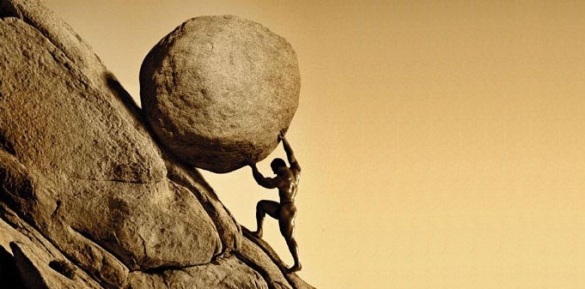
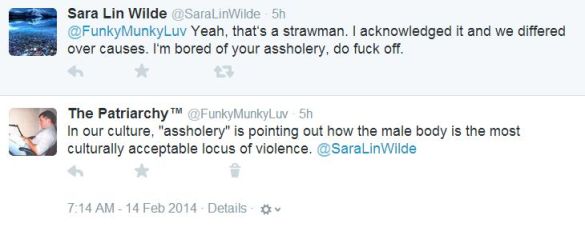
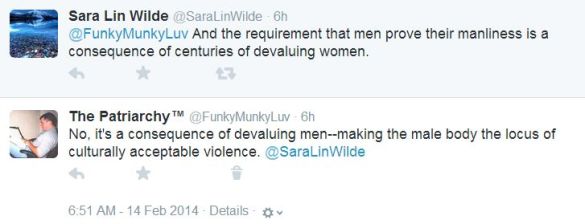
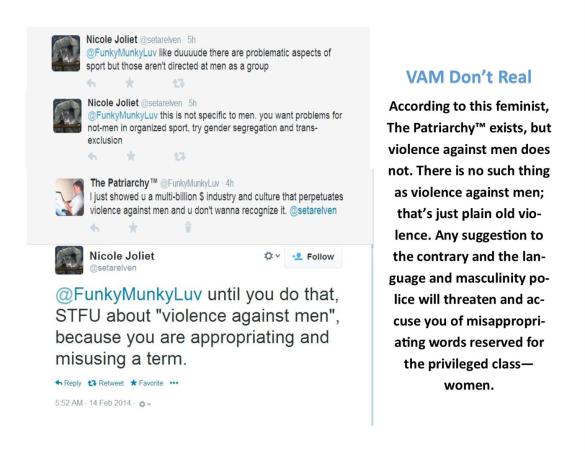
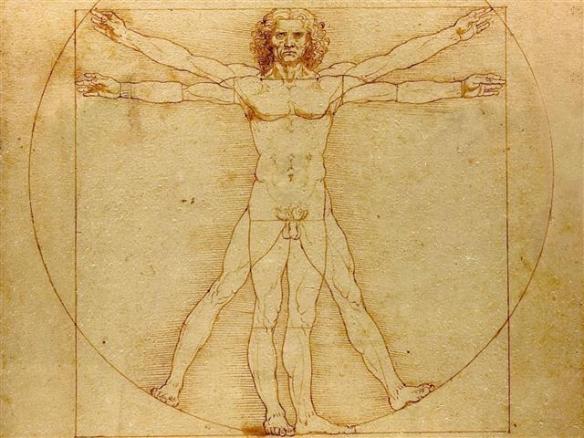

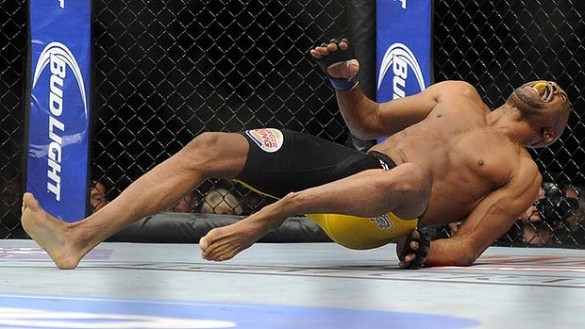

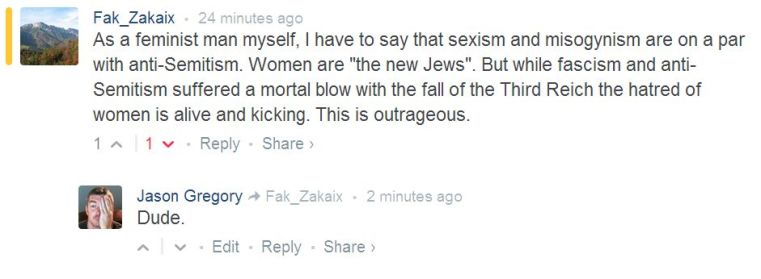
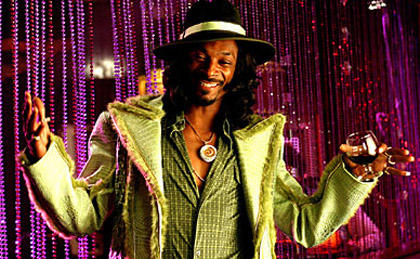


You must be logged in to post a comment.